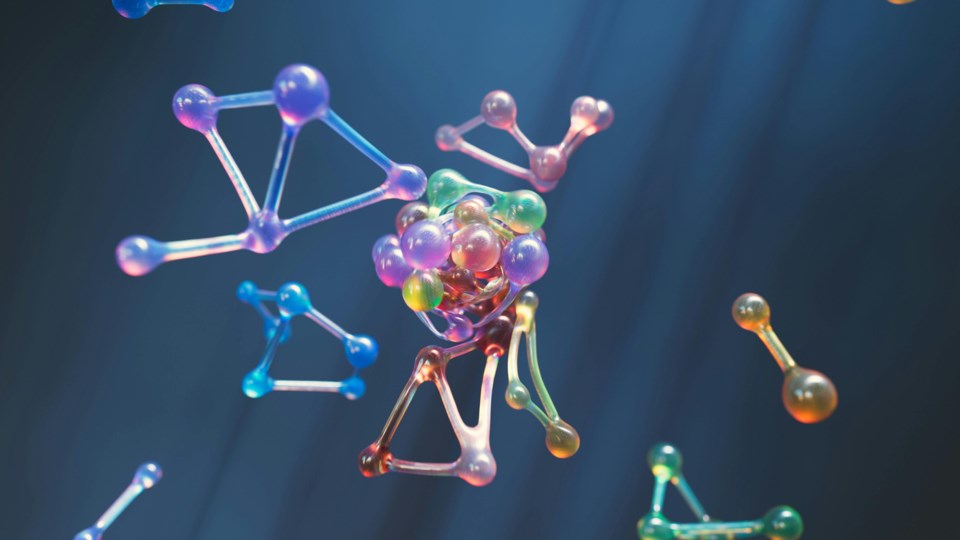To understand the Polygon crypto, it's essential to explore the entire Polygon network, ecosystem, technology, its cryptocurrency’s financial aspects, and more. In this article we will look into all of that to gain a comprehensive understanding of what is Polygon crypto, also introducing Polygon swap.
Polygon network (previously known as Matic Network) is a decentralized blockchain that has been designed in such a way to improve on the Ethereum blockchain and provide multi-chain and development solutions. Polygon’s native crypto currency is MATIC and further in this article we will touch on the MATIC exchange and more of MATIC’s features.
By using its tools and mechanisms, Polygon sees its objective as optimization of blockchain technology, which makes the whole Polygon network more accessible and efficient for a vast variety of applications.
What Is MATIC’s Current Price
As of June 19th, 2024, MATIC’s price is at $0.57 with the market capitalization of $5,657,123,864. Its total supply is 10,000,000,000. Of all the cryptocurrencies MATIC ranks 18th in terms of the market cap, and 25th in terms of volume (24h).
If you want to stay up-to-date with all things crypto, SimpleSwap is here for you. It offers a vast variety of mechanisms and tools to swap, sell and buy crypto. Of course, MATIC is included. Moreover, on SimpleSwap you can learn more about many cryptocurrencies, crypto news, DeFi protocols, and so much more. Users get an insight into detailed and meticulous analytics which helps make informed crypto decisions.
How Does Polygon Work?
Here we will give a start to understanding Polygon’s overall technology, principles, and features.
First of all, at the very heart of Polygon technology one will find its Proof-of-Stake (PoS) consensus mechanism, as opposed to Proof-of-Work mechanism, and we will return to this statement further in this article.
PoS mechanism implies the existence of validators and delegators. Their work leads to successful verifying of transactions and provision of network security.
The first essential party is validators. Their functionality includes authentication of transactions and creating new blocks in the blockchain. Thus, they provide aid in the security of blockchain. As a reward for their actions, validators receive transaction fees and newly minted MATIC tokens.
The other crucial party in the process is delegators. They participate in staking indirectly by selecting a trusted validator to stake their MATIC crypto coin on their behalf. This method of course requires selecting a trustworthy validator.
Why Use Polygon?
The primary goal of Polygon is to address slow transactions, which is what Ethereum blockchain is known for. Polygon aims at creating a more efficient and user-friendly ecosystem and to lift the weight off the Ethereum mainnet.
Polygon’s inherent PoS Matic Chain is seen as the basis for the deployment and testing of smart contracts designed for the Ethereum network.
Polygon Transaction Speed
In contrast to Ethereum, which is capable of processing approximately 17 transactions per second, Polygon is capable of handling 65,000 transactions per second. Thus, Polygon adheres to its primary objective of making faster processes on the Ethereum blockchain.
Polygon Technology
One of the most important things to touch here is Polygon’s strategy to use sidechains. They can be observed as running in parallel to the Ethereum main chain, thus providing faster transactions. These sidechains function independently of the Ethereum main chain but are connected to it. The sidechains also aim at providing the more cost-effective processes.
Overall, said sidechains see their objectives as reduction of the load placed on the main network, and optimization of network operations by the way of separating different functions.
Polygon Basics
Another essential part of the Polygon ecosystem is of course its native coin, MATIC.
The use of MATIC allows for supporting Polygon’s growth and sustainability through various mechanisms like staking, governance, and rewards.
The crucial part of the whole MATIC blockchain is the Proof-of-Stake Matic Chain. Polygon builds on it to provide smoother and more secure functioning of decentralized applications and its services.
Also, as said before, Polygon uses the PoS consensus mechanism. Using it implies that the security of the network is contingent upon the participation of crypto holders, who stake their coins in order to validate transactions and create new blocks.
Polygon Founders
Polygon was established in 2017 by Jayanti Kanani, Sandeep Nailwal, and Anurag Arjun. Originally called Matic Network, the project initially received backing from friends and family of its founders in Mumbai. As Polygon project grew in popularity, it started to attract investors from around the globe.
Uses Of MATIC
MATIC network was created on the Ethereum Virtual Machine (EVM) using the ERC-20 token standard, leveraging the full capabilities of EVM. This compatibility makes it perfect for developers to port their existing dApps to the Polygon network, that way enhancing its appeal and usability.
Below is the list of how MATIC can be put into action:
1. Transaction Fee Payment
2. Staking and Voting
3. Rewards and Incentives
4. Ecosystem Participation
What Makes Polygon So Special
Here are two of Polygon’s ultimate advantages all of which attract crypto market participants towards using this blockchain:
- Polygon crypto solution enhances Ethereum's capabilities by making possible faster and cheaper transactions.
- Polygon is scalable, efficient, and fast
Conclusion
Polygon crypto is a comprehensive solution aimed at enhancing the Ethereum blockchai.
In this article we looked into what is MATIC crypto. MATIC is pivotal for Polygon’s operations, serving purposes such as transaction fees, network governance, and staking.
Polygon’s core technologies ensure high throughput and efficient network operations, enhancing the overall usability and performance of blockchain projects. MATIC's integration within the Ethereum Virtual Machine (EVM) further boosts its compatibility and ease of use for developers.




